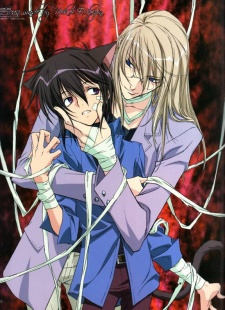Wow.
Just wow.
I
don’t think my opinion of an anime has ever changed so drastically within the
space of a few episodes. Wow…
In
the beginning I had high hopes for Baka to Test to Shoukanjuu. The concept
alone was pretty interesting and with the right development could have been a
compelling taken on school streaming and to a certain extent classism. The
primary plot concerns the ranking of students by their academic ability into
A-F sets, something commonplace in the UK, but apparently rare in Japan. Not
that the lower sets receive additional support or supervision mind, just substantially
less privileges. In the case of the bottom set, Class F, a run-down classroom,
complete with old broken furniture (desks that later get replaced with
cardboard boxes) and broken windows. Cos those conditions will really motivate
students! So, the students of Class F (all
six of them) decide their going to challenge the system and “declare war” on
the other sets. Honestly, I really like this pitch. If it had had an ounce more
of thought or if it had followed actually through with this set up, then I
would probably be singing a different tune right about now.
So,
episode one, Class F declare war on Class E. And its goofy and silly and over
the top, and they win. Huzzah! In episode two, a shocking twist of events, Class
A declares war on Class F, and Class F lose! Oh well, didn’t expect them to
complete their task by the second episode! And that that’s for eight straight
episodes… I am dead serious. Apparently there’s a rule that the losing set
cannot declare war for three months, so the main plot pretty much stops. Instead
fuck all happens for eight episodes. Eight inane, grating episodes. Presumably
this is supposed to pass for character development, but it’s so fucking derivative.
There’s even a god-damn pool episode! This has fuck all to do with anything.
Onto
the characters, they range from tolerable to fucking diabolical. The main
character is a perpetual child and screeching moron. The love-interests are so
underwhelming, and the fucking ninja-pervert….please die. Most of the jokes
fall flat because they are the same one note repeated at nausea. Girl has flat
chest, guy looks like girl, everyone has their own stalker, ninja-pervert takes
a panty shot, and it’s a non-stop laugh riot! For all of five minutes. The fact
remains that we’ve seen this format before and done better. And it wasn’t all
that funny then either. The problem is that the characters are not invested. We
as the audience are supposed to root for these characters, because they are the
underdogs, because the system is unfair, and because they are treated badly. But
that’s rarely shown because that is not what interests the writers. The
protagonists are not crusading for equality. They just want the entitlements
awarded to the higher sets. Without any of the work. They not only support the
system, they want to benefit from it. And frankly, that’s not something I can
get behind.
So…
yeah I didn’t much enjoy this one.
Rating:
4/10








